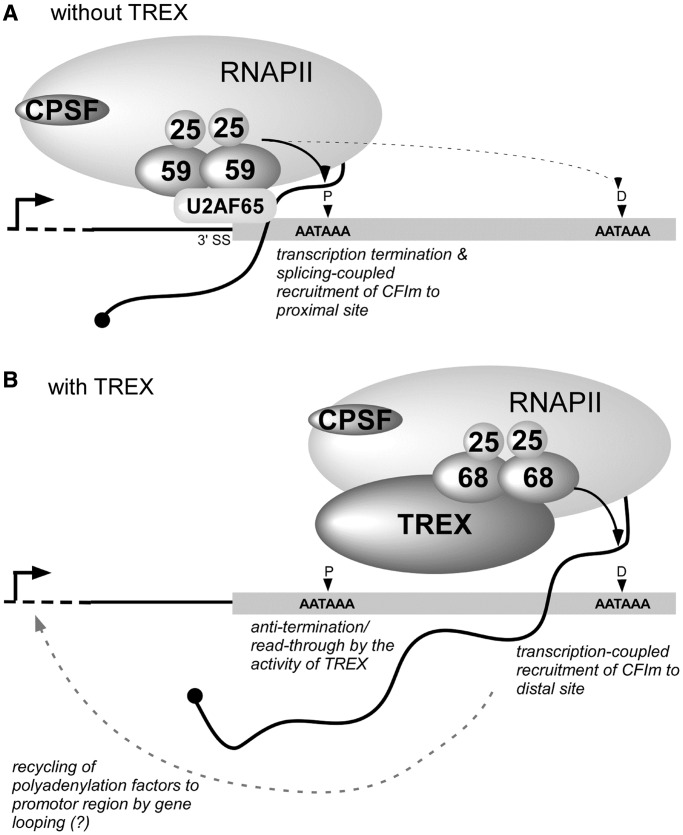Figure 5.
A possible mechanism of THO/TREX-dependent cleavage and polyadenylation at distal polyadenylation sites. The thin line and gray box indicate the last intron and terminal exon, respectively. The curved line with the black circle indicates nascent pre-mRNA. The vertical arrowheads show the different polyadenylation sites in the terminal exon (P, proximal site; D, distal site). The thin dashed line indicates the upstream region of the gene. The vertical line with the horizontal arrow indicates the transcription start site. The ovals with numbers indicate the small and large subunits of CFIm. For simplicity, CFIIm, U2 snRNP, CstF and so forth are not depicted in the diagram. (A) CFIm, tethered near the 3′ splice site (3′SS) via the interaction between CFIm59 and the splicing factor U2AF65, triggers the accumulation of cleavage and polyadenylation factors, thereby coupling splicing and polyadenylation (59). The cleavage and polyadenylation machinery formed in this manner may exert a stronger effect on the proximal site (thick arrow) but not on the distal sites (thin dashed arrow). (B) In the presence of TREX, a fraction of transcribing RNAPII escapes termination at the proximal site and continues elongating further downstream. CFIm is co-transcriptionally recruited by THO/TREX, thus enabling the cleavage/polyadenylation at the distal site. At present, it is unclear whether two different populations of RNAPII (i.e. with or without associating THO/TREX) exist. After transcription termination at the distal polyadenylation site, CFIm along with other transcription and polyadenylation factors may be recycled back to promoter region by gene looping for other rounds of transcription (61,62).

